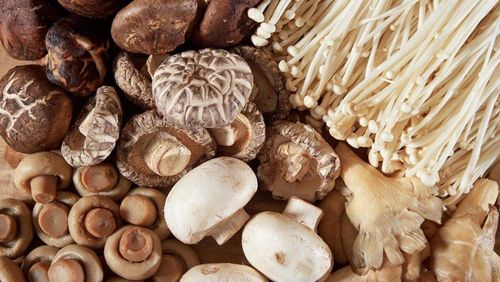This is an automatically translated article.
The article was written by MSc Ma Van Tham - Internal Medicine Doctor, Department of Pediatrics - Neonatology - Vinmec Phu Quoc International General Hospital.
Fungi exist everywhere, in soil, water, air, on plants and animals, and on the human body. When meeting favorable conditions such as hot and humid weather, the body's resistance decreases... fungi will grow and cause disease. Fungal diseases can occur in both adults and children
1. Mushroom properties
There are over a million species of fungi, of which there are hundreds of thousands of species of fungi. Pathogenic fungi are fungi. There are over three hundred species that can cause disease in humans.
Pathogenic fungi are divided into two main types: filamentous fungi and yeasts. There are also some dimorphic fungi, which are yeasts when causing disease in humans and filamentous fungi in the environment. culture.
2. Classification of fungal kingdoms
Taxonomy of fungal kingdoms based on structure, biochemistry and molecular biology. Fungi are divided into class, order, family, genus/genus and species.
Class Basidiomycetes has no species that are parasitic in humans
Class Actinomycetes causes diseases of the feet, jaws, and groin
Class Phycomycetes causes rare diseases of the skin and mucous membranes
Class Ascomycetes causes lesions in the skin, hair, nails, entire body Dear. In this class are the family Blastomyces, Histoplasma of the order Endomycetales and the genus Aspecgilus of the family Aspergillaceac of the order Plectascalles that can cause disease.
The class Adelomycetes has the nature of a temporary species of fungus, which, after detecting the forms of sexual reproduction, will be transferred to one of the above orders.
In this class is the family Candida of the order Blastosporae. There are many different species of Candida that can cause similar diseases.
Some characteristics of Candida:
In nature, it lives a lot in sugar-containing environments such as fruits, vegetables, orchards, confectionery factories, etc. It is a thin-walled spore, a saprophytic fungus in humans. Candidiasis is usually an opportunistic infection after having another disease or taking antibiotics, corticosteroids, immunosuppressive drugs, acquired immunodeficiency (HIV) or congenital... Candida can causes many different diseases in many different organs and organs: skin (onychomycosis, interstitial fungus, hand fungus, foot fungus...), mucosa (mouth, larynx, digestive tract, genitals). ..), organs (liver, lungs...), blood infection . Candida albicans species is the most common, can also meet Candida tropicalis, Candida krusei, Candida parasilosis...

3. Classification of diseases caused by fungi
Fungi can cause 4 diseases:
Allergy to fungi (Hypersensitivity): A hypersensitivity reaction to molds and fungal spores. Mycotoxicoses: People or animals that eat food contaminated with fungi produce toxins that cause toxicity. Mycetismus: Acute poisoning caused by fungi, which can lead to death. Infection: Most of the fungi that cause fungal infections do not produce toxins, but they are capable of causing physiological disorders such as increased metabolic rate, metabolic changes and cell membrane structure. Most fungi can tolerate relatively high temperatures and can survive under the action of redox agents, macrophages, so fungi can withstand the body's resistance. owner. Fungal infection usually depends on the number of fungal spores infected and the host's resistance. In clinical practice, fungal diseases are often classified as follows:
Superficial or dermatomycosis are fungal diseases of the outer layer of the skin, nails, and hair, rarely spreading into deeper tissues or organs Subcutaneous mycoses: Causes The disease is localized to the subcutaneous region, usually involving the lower extremities, rarely spreading to the whole body. Systemic or systemic mycosis: May cause disease in deep viscera and may be widespread. Each type of fungus is adapted to each organ, each organ. Opportunistic fungal diseases: are cases of fungal infections on the basis of immunodeficiency, less related to toxins. Depending on the location of the disease, fungal diseases can also be divided into two types:
Deep fungal infections: Fungal invasion of body tissues such as visceral fungi, brain fungus, blood fungal infections... Shallow fungal infections : Including skin and mucosal fungi. When there are abnormal manifestations in the skin or mucous membranes, suspected fungal infection should immediately go to a medical facility for examination and treatment.
Vinmec International General Hospital with a system of modern facilities, medical equipment and a team of experts and doctors with many years of experience in medical examination and treatment, patients can rest assured to visit. examination and treatment at the Hospital.
Please dial HOTLINE for more information or register for an appointment HERE. Download MyVinmec app to make appointments faster and to manage your bookings easily.














